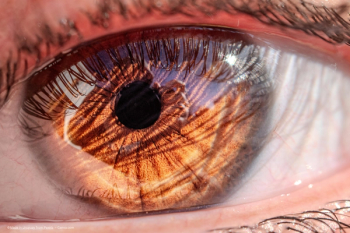
Neuroprotective agent in sight?
Are we getting any closer to a cure or more targeted therapies?
A neuroprotective approach to the treatment of glaucoma is not imminent, but several promising approaches are under investigation. Areas that hold the most possibility are targeting amyloid-beta, complement activation and tumor necrosis factor (TNF)-alpha signaling, said Dr Stuart McKinnon, PhD.
"Will we ever have a neuroprotective agent? Yes," said Dr McKinnon, associate professor of ophthalmology and neurobiology, Duke University Medical Centre, Durham, North Carolina, USA. "Will we have one in the next five or ten years? Probably not.
"Will we have one in our lifetime? I hope so," he added. Dr McKinnon has reviewed several therapeutic strategies that have been successful using animal glaucoma models.
This finding suggests a possible relationship between the two diseases, Dr McKinnon said. Altered metabolism of amyloid-beta and amyloid precursor protein (APP), which plays a central role in neuronal homeostasis, contributes to apoptosis of retinal ganglion cells (RGC) in glaucoma.
Two classes of drugs are FDA-approved to treat AD: acetylcholine esterase inhibitors (donepezil, Aricept, Pfizer/Eisai, rivastigmine Exelon, Novartis and galantamine Razadyne, Ortho-McNeil-Janssen Pharmaceuticals) and an N-methyl-D-aspartate receptor antagonist, memantine (Namenda, Forest Pharmaceuticals).
In a rat glaucoma model, galantamine was more neuroprotective than donepezil or memantine, Dr McKinnon said, but memantine did not show any improvement in glaucoma in a large multicentre clinical trial.
Two anti-amyloid approaches that may be useful in the treatment of glaucoma are decreasing amyloid-beta production by secretase inhibition or interfering with amyloid-beta aggregation by using amyloid-beta vaccination. Another strategy that has demonstrated neuro-protection in a rat glaucoma model is the use of intravitreal antibodies to amyloid-beta, Congo red, and beta-secretase inhibitors, singly or in combination.
Complement activation
Complement activation is another target for neuroprotection. New studies have shown that activation of the classical complement cascade is important in RGC death in glaucoma.
Complement C1q is the first element in this cascade, and C1q upregulation has been detected in retinas in murine, primate and human glaucomas, Dr McKinnon said.
In addition, it has been found that complement activation in glaucoma resembles that seen in AD, suggesting that the normal developmental mechanism of complement-mediated synapse elimination goes awry in the adult CNS in neurodegenerative disease.
Explaining recent findings, Dr McKinnon said that in the presence of astrocytes, purified ganglion cells exhibit C1q upregulation, an early event that begins at about postnatal day 5 and stops after about two weeks.
In a mouse glaucoma model of pigment dispersion, investigators found that C1q is upregulated as IOP increases. This also was observed in a monkey model of glaucoma.
"During normal postnatal development, a synaptic pruning process is occurring as the retina matures, but in adult neurodegeneration, aberrant activation of this developmental process is seen, in which reactive astrocytes resemble immature astrocytes, inducing C1q expression," Dr McKinnon said. "In adult glaucomatous retinas, C1q targets the synapses for early elimination and this could drive dendritic atrophy and axonal degeneration in glaucoma."
Clinical trials using complement inhibitors are underway for diseases other than glaucoma, and Dr McKinnon said he expects that it is just a matter of time before similar clinical trials are undertaken for glaucoma.
Targeting TNF-alpha
The third promising strategy involves targeting TNF-alpha, an inflammatory cytokine that, along with its receptors, is often implicated in glaucoma pathogenesis.
Several years ago researchers showed that the cytokine TNF-alpha was involved in RGC and oligodendrocyte loss in a mouse model of glaucoma.
Dr McKinnon and his colleagues have conducted further research in a mouse model of chronic ocular hypertension on the role of TNF signaling in adult RGCs exposed to long-term IOP elevation, finding that double knockout of TNF receptors 1 and 2 provided robust neuroprotection when compared with wild-type controls.
"The future of neuroprotection in glaucoma involves blocking formation or aggregation of amyloid-beta using either immunotherapy, beta or gamma-secretase inhibitors, or small molecule peptide inhibitors, and there is certainly a lot of this drug development going on in the AD community," Dr McKinnon said. "Other strategies may involve targeting neuroinflammation or at least immune-mediated cell death by blocking the complement cascade with complement inhibitors or inhibiting the TNF receptor pathways.
"These recent findings show considerable promise for the development and testing of targeted therapies in the very near future," he concluded.
Newsletter
Get the essential updates shaping the future of pharma manufacturing and compliance—subscribe today to Pharmaceutical Technology and never miss a breakthrough.












































